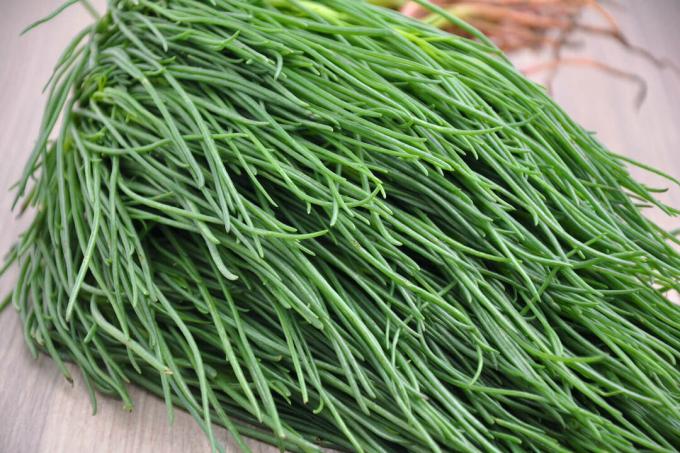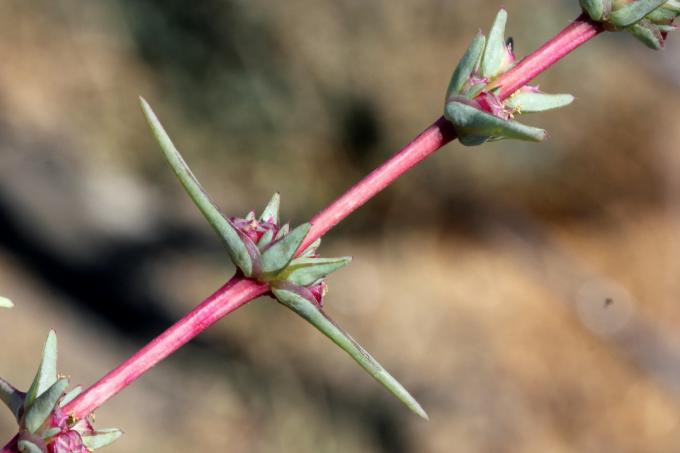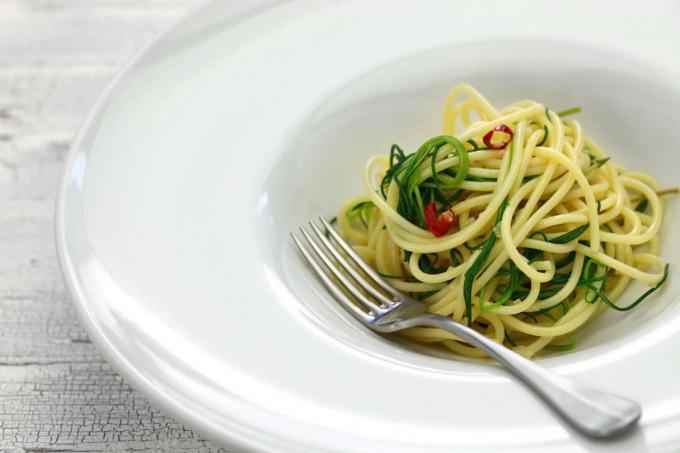Monk's beard, called Agretti in Italian, is a representative of the salt herbs that is often used in the kitchen. Even if you don't live by the sea and don't have a salt lake in your garden, you can easily grow salt herbs yourself.

The name brine suggests the characteristic property of the group of plants: the preference for salty soils. Associated with this, the slightly salty taste of salt cabbage is reminiscent of the sea and vacation. You can bring that holiday feeling back home by planting a monk's beard yourself. Everything you need to know - from sowing the Agretti seeds to care, harvesting and preparation - can be found in this article.
contents
- What is the difference between a monk's beard, agretti and brine?
- Growing of monk's beard, agretti and brine
- Care of brine and co.
- Harvest and use
What is the difference between a monk's beard, agretti and brine?
Several species from the subfamily of the Salsoloideae, which are subordinate to the foxtail family (Amaranthaceae), are referred to as salt herbs. A well-known and popular representative is monk's beard (
Salsola soda). This herb originally comes from Eurasia and North Africa, but can now be found on many coasts as far as Scandinavia and Japan. While monk's beard is still a rarity here and is rarely found in well-stocked weekly markets, it is well established in Italian cuisine, for example. There the herb is not called a monk's beard, but Agretti or Barba di Frate. Another well-known representative of the salt herbs is the Japanese salt herb (Salsola komarovi), which is also known as land alga in Japan and is often used for sushi.tip: A plant called ice flower is also called brine. However, this belongs to a completely different family, the Aizoaceae, and is therefore not related to the salt herbs described here.

The salt herbs grown by us are not perennial and therefore have to be sown or planted in the garden every year. Salt herbs have strongly branched stems that are slightly lignified despite being one year old. The color of the shoot is different. If the brine is greenish-white under normal circumstances, it often turns reddish in the event of drought stress, lack of nutrients or increased salt content.
Monk's beard can reach a height of up to 70 cm. Its leaves are round and long, making them resemble needles. Agretti flowers approximately from June to September. However, the flowers are greenish, very small and sit inconspicuously in leaf axils. Fruits develop from this, which in nature are mainly spread by wind. They can also be harvested from most varieties and used for your own reproduction.

Growing of monk's beard, agretti and brine
Mönchsbart's demands on its location are relatively high. Naturally, Agretti is more likely to be found in damp areas, for example salt marshes, salt marshes or at coastal locations. Saltwort is also a halophyte. That means monk's herb not only tolerates salt, it requires sodium chloride in the soil to thrive.
Agretti need a lot of light, which is why they are best grown in locations with a lot of sun.
For planting salt wreaths, you can use ours, for example Plantura organic universal soil use that is peat-free for the sake of the environment and still has a very good water storage capacity. Mixed with a little table salt, this soil can be prepared for a monk's beard.
Tip: Use a maximum of two teaspoons of salt per liter of pot volume or one to two teaspoons per plant outdoors. Mönchsbart can tolerate salt concentrations of up to eleven grams per liter. It accumulates sodium, so it stores it in the plant body. The addition of salt leads to compact plants and aromatic leaves.
You can sow brine from mid-April to May directly outdoors. Since the seeds of Mönchsbeard can only be stored for a short time and have a relatively low germination rate, sowing can sometimes fail. In addition, young brine plants are still susceptible to late frosts. For these reasons, it is advisable to prefer brine in the house on the windowsill from February to April.
Procedure for pre-cultivation:
- Prepare a seed tray, for example, with our well-moistened one Plantura organic herb and seed compost and a maximum of 2 teaspoons of salt per liter of soil.
- Spread the monksweed seeds relatively densely, about 3 cm apart, and cover the seeds with about 1 cm of soil. Then water everything well.
- Make sure the floor temperature is 15 to 20 ° C. In addition, the soil should always be kept moist, but never wet.
- In good conditions, monk's herb seeds germinate within 7 to 10 days. But it can also take a little longer.
- When the plants are about 3 to 4 cm high, they can be pricked out at a distance of 20 x 20 cm in their final location, either in the pot or in the garden.
- Especially in the time after transplanting the salt herb, make sure that there is an adequate water supply.

tip: Growing Agretti in the greenhouse as a winter crop at around 15 ° C can also work. To do this, the seeds of the brine are sown directly into the final substrate in the greenhouse by October.
Care of brine and co.
There is not much that needs to be considered when caring for brine. Salsola soda should be watered regularly and grows even better with fertilization every two weeks. A suitable fertilizer is, for example, our liquid fertilizer Plantura organic tomato and vegetable fertilizer. It consists of 100% natural, plant-based and animal-free ingredients and is produced in the most resource-conserving way possible. Every two weeks 10 ml of this should be stirred into one liter of irrigation water and used to water the plant.
tip: Fortunately, snails don't like brine at all.
Harvest and use
Saltwort grows relatively quickly and can be harvested after around two months. If the nutrient supply is sufficiently good, the plants will sprout again vigorously after the harvest so that they can be harvested continuously. The younger the shoots, the crisper and fresher they taste. So do not hesitate too long with the harvest and simply cut off the tips of the shoots. Care should be taken to leave at least five centimeters of the original shoot so that the plant can sprout again.
We have received many Agretti recipes, especially from Italian cuisine, including pasta with a monk's beard. Freshly added cabbage gives salads a fresh aroma reminiscent of the sea and vacation. Other recipes with Agretti include ravioli with salted cabbage or simply adding them to omelets or scrambled eggs.

Can you eat monk's beard raw? There is nothing to prevent the raw consumption of monk's herb. On the contrary: since salt herbs contain many vitamins that are destroyed by heat, it is even best to eat them raw. The preparation of monk's beard is also easy. For example, it can be added fresh directly to salads or sautéed briefly in a little oil, similar to spinach.
How Healthy is Monk's Beard? In addition to calcium, potassium and sodium, the ingredients of Mönchsbart also include many vitamins, especially vitamins C and E as well as various B vitamins. Monk's beard is considered healthy, even if no special healing effects are documented for brine.

Another vegetable that has been largely forgotten and also thrives well in salty locations is the so-called Sea kale. You can find everything you need to know about planting and caring for beach cabbage in our special article.



